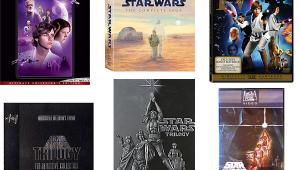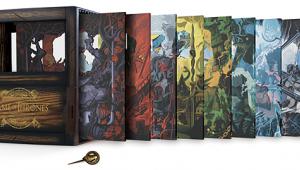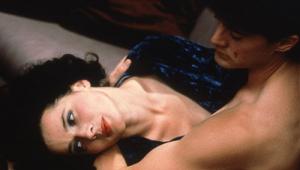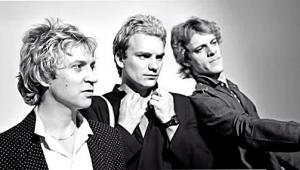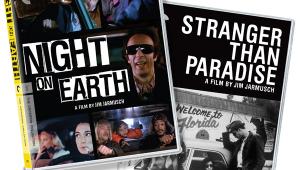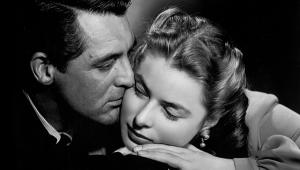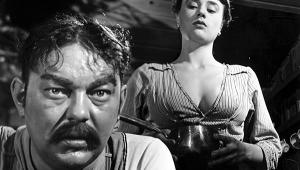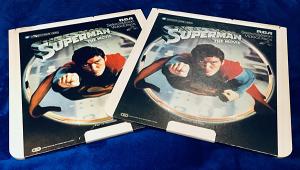Kind of Blu
High-resolution audio is like a drowning man who, just when all seems lost, suddenly bobs back up to the surface for a convulsive gulp of air. CD replaces vinyl—he’s down. CD mastering improves—he’s up. Bad CD mastering squashes dynamic range—he’s down. SACD and DVD-Audio make their debuts with new 5.1-channel recordings and/or mixes—he’s up. The high-rez audio formats tank—he’s down. Vinyl makes a comeback—he’s up. Low-quality lossy downloads gut CD sales—he’s down. Oh Lord, he’s been down there a long time now. Will we ever see his head above water again?

Fire up the Good Ship Blu-ray. Zoom through the waves to the drowning man. Throw him a life preserver. But which one? On the port side we have the Dolby life preservers, one labeled TrueHD, the other Dolby Digital Plus. But we hear a cry from starboard, where crew members have found the DTS-HD life preservers, one labeled Master Audio and the other High Resolution Audio. Now there is some debate among the crew about which is better—Dolby or DTS—as the drowning man screams and begs for his life. And while we’re at it—lossless or lossy? Then someone pops up from the cargo hold waving a fifth life preserver labeled PCM.
“Are you mad?” yells the drowning man.
“Just throw them all down there,” rules the captain. Five life preservers hit the surface of the water.
Everyone waits.
“How are you doing down there?” calls the Captain. “Just fine,” answers the reprieved-from-drowning man. “Would you order me a martini?”
All of this is a way of suggesting that a long-established historical cycle is repeating itself. A new format—or two, if you count HD DVD—has once again made it possible for audio technology to take a flying leap forward. For music lovers, for whom SACD and DVD-Audio may have been missed opportunities, this means renewed access to music mixes in (potentially) high-rez surround. For the ailing music industry, music on Blu-ray may be a new product to tempt the high-end consumer away from sleazy downloads—but only if the record labels have the wisdom to support it. And for Sony and the other Blu-ray powers, it offers a way to broaden the formative format’s appeal beyond movie releases.
What follows are snapshots of the Blu-ray music market. As of a few months ago, there were a few exceptionally tempting items in Dolby TrueHD and DTS-HD Master Audio, both of which are lossless formats that combine master-tape-quality sound with greater efficiency than uncompressed PCM. But because the new Dolby and DTS codecs were just finding their way into hardware, much of the Blu-ray music selection took the form of generic high-bit-rate PCM. And finally, there were releases in the older Dolby and DTS 5.1 codecs.
Dolby TrueHD: Smart Bits
Dave Matthews, God bless him, and ace guitarist Tim Reynolds give their audience a generous 2 hours and 45 minutes in Live at Radio City Music Hall (ATO/RCA). The producers of this disc know what they’re doing—the jacket proudly specifies the resolution of the TrueHD surround track (96-kHz/24-bit), the stereo PCM (48/24), and yes, even the Dolby Digital 5.1, which, at 640 kilobits per second, should sound a lot better than first-generation Dolby Digital. At that resolution, the biggest sonic limitations are the use of pickups instead of mikes for the two acoustic guitars and the digital processing applied to both guitars and voices (for those cool echo effects). This is not a complaint, just a description. Matthews, arguably the most lovable living rock star, gushes energy and inspiration. And Reynolds is just astonishingly inventive—his chops and ideas should turn any guitarist green with envy. Production values are high, and the venue, New York’s Radio City Music Hall, is ideal for these guys.

David Gilmour’s Remember That Night: Live at the Royal Albert Hall (Columbia Music Video) provides an instructive contrast between TrueHD versus Dolby Digital. The timeless deep-space guitar and vocals have about the same texture. But in TrueHD, the reverb is more detailed and the soundfield noticeably larger. Blu-ray’s picture is also much less grainy than the DVD version. The stellar backing band includes former Pink Floyd member Rick Wright on keyboards, Roxy Music’s PhilManzanera on guitar, Dick Parry on sax, Robert Wyatt on cornet, David Crosby and Graham Nash serving as backup singers, and best of all, David Bowie taking the lead vocal on the Syd Barrett–era “Arnold Layne” and the Roger Waters–era “Comfortably Numb.” Generous slices are cut from Dark Side of the Moon and other Floyd albums, and if you haven’t already heard Gilmour’s latest CD On an Island, you’re in luck—the live versions re-create much of the studio recording but in higher-rez surround. The production sports lots of cameras, lots of cutting, many closeups of the guitarists’ hands, and colorful stage lighting, although without the projections Pink Floyd would use. Musically, this is close to a Pink Floyd concert, with half the members present; but visually, it’s closer to the back-to-basics ethos of Gilmour’s 2002 In Concert DVD, also taped at Royal Albert Hall.

The Legends of Jazz: Showcase (LRSmedia) is an hour of prime jazz hosted by Ramsay Lewis. Camerawork and direction are deliberately just slightly loose but very accomplished. Sound is as gorgeous in Dolby TrueHD as it previously was in the DVD-Audio release. The mixer seems ambivalent about the center channel. In a sax duet between David Sanborn and Phil Woods, all three front channels play loud and proud, but in the following Chick Corea piano solo, the sound is basically surround-enhanced stereo.
- Log in or register to post comments


